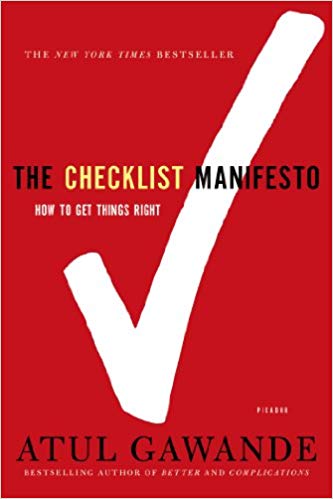

This article is an excerpt from the Shortform summary of "The Checklist Manifesto" by Atul Gawande. Shortform has the world's best summaries of books you should be reading.
Like this article? Sign up for a free trial here .
How do aircraft checklists keep us safe? The field of aviation was one of the first to adopt the use of checklists, and we can learn a lot from how the rigor of these checklists (and the professionals who use them) keep passengers safe.
We’ll cover aviation checklists at Boeing and discuss how checklists can benefit the rest of us.
Boeing Discovers Aircraft Checklists
In 1935, the Army Air Corps asked airplane manufacturers for a new long-range bomber. Boeing’s Model 299, which exceeded specifications, was favored over models by Martin and Douglas. However, during a flight competition held by the Army in Dayton, Ohio, the Boeing model stalled at 300 feet and crashed, killing two of five crew members.
The plane was much more complicated than previous aircraft — the pilot had more steps to follow and forgot to release a new locking mechanism on the elevator and rudder controls. After the accident, a newspaper called the new model “too much airplane for one man to fly.” The Army Air Corps chose Douglas’s smaller design, and Boeing took a big financial hit.
Nonetheless, the Army bought a few Model 299s as test planes and a group of test pilots studied how to prevent future pilot errors. Instead of focusing on requiring longer training, they came up with a pilot’s aviation checklist. Flying up to that point had not been especially complicated, but flying the new plane required too many details to be left to memory.
The test pilots made their aircraft checklist simple, clear, and concise — it fit on an index card — with step-by-step checks for takeoff, landing, and taxiing. Using the checklist, pilots went on to fly the bomber, which became the B-17 Flying Fortress, 1.8 million miles without incident. The Army ordered 13,000, and the bomber gave the allies a big air advantage in World War II.
Aircraft checklists have become essential in aviation, averting problems and accidents. In notebook and electronic forms, they’re a standard and crucial part of pilot training and aircraft operation.
The Benefits of Checklists for Us All
Aircraft checklists aren’t the only checklists that are useful. In complex environments, checklists can help to prevent failure by addressing two problems:
1) Our memory and our attention to detail fail when we’re distracted by more urgent matters. For instance, if you’re a nurse, you might forget to take a patient’s pulse when she’s throwing up, a family member is asking questions, and you’re being paged.
Forgetfulness and distraction are especially risky in what engineers call all-or-none processes, where if you miss one key thing, you fail at the task. For instance, if you go to the store to buy ingredients for a cake and forget to buy eggs, you can’t make the recipe because it wouldn’t work without eggs. The consequences are more serious if a pilot misses a step during take-off or a doctor misses the key symptom.
2) People have a tendency to skip steps even when they remember them. In complex processes, certain steps don’t always matter, so people may play the odds and skip them. For instance, if measuring all four of a patient’s vital signs (pulse, blood pressure, temperature, and respiration) only rarely detects a problem, you might become lax about checking everything.
Checklists, including aircraft checklists, protect against such failures because they remind you of the minimum necessary steps by spelling them out. They allow you to verify each step while also establishing and instilling a performance standard.
———End of Preview———

Like what you just read? Read the rest of the world's best summary of "The Checklist Manifesto" at Shortform . Learn the book's critical concepts in 20 minutes or less .
Here's what you'll find in our full The Checklist Manifesto summary :
- How checklists save millions of lives in healthcare and flights
- The two types of checklists that matter
- How to create your own revolutionary checklist






